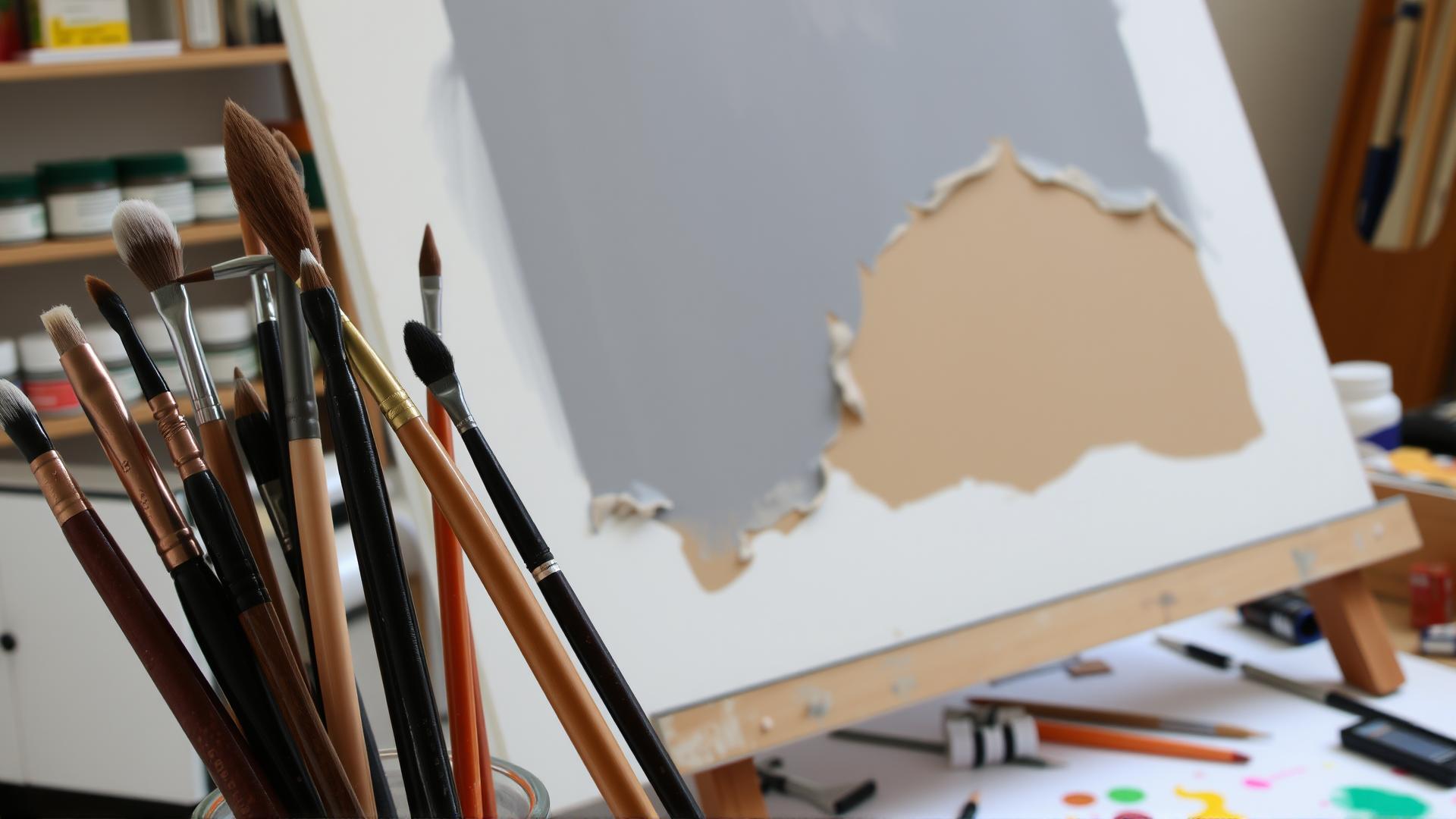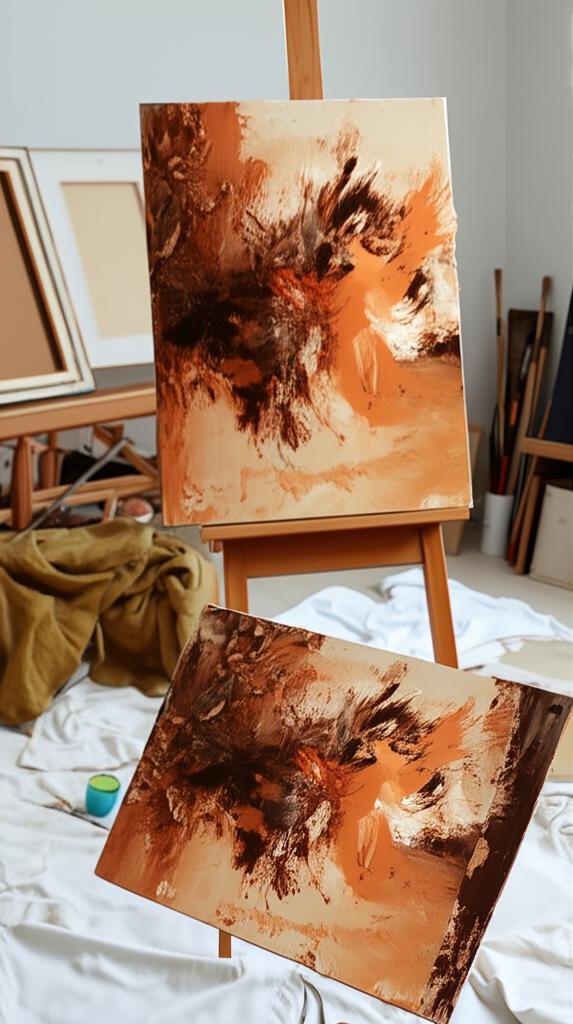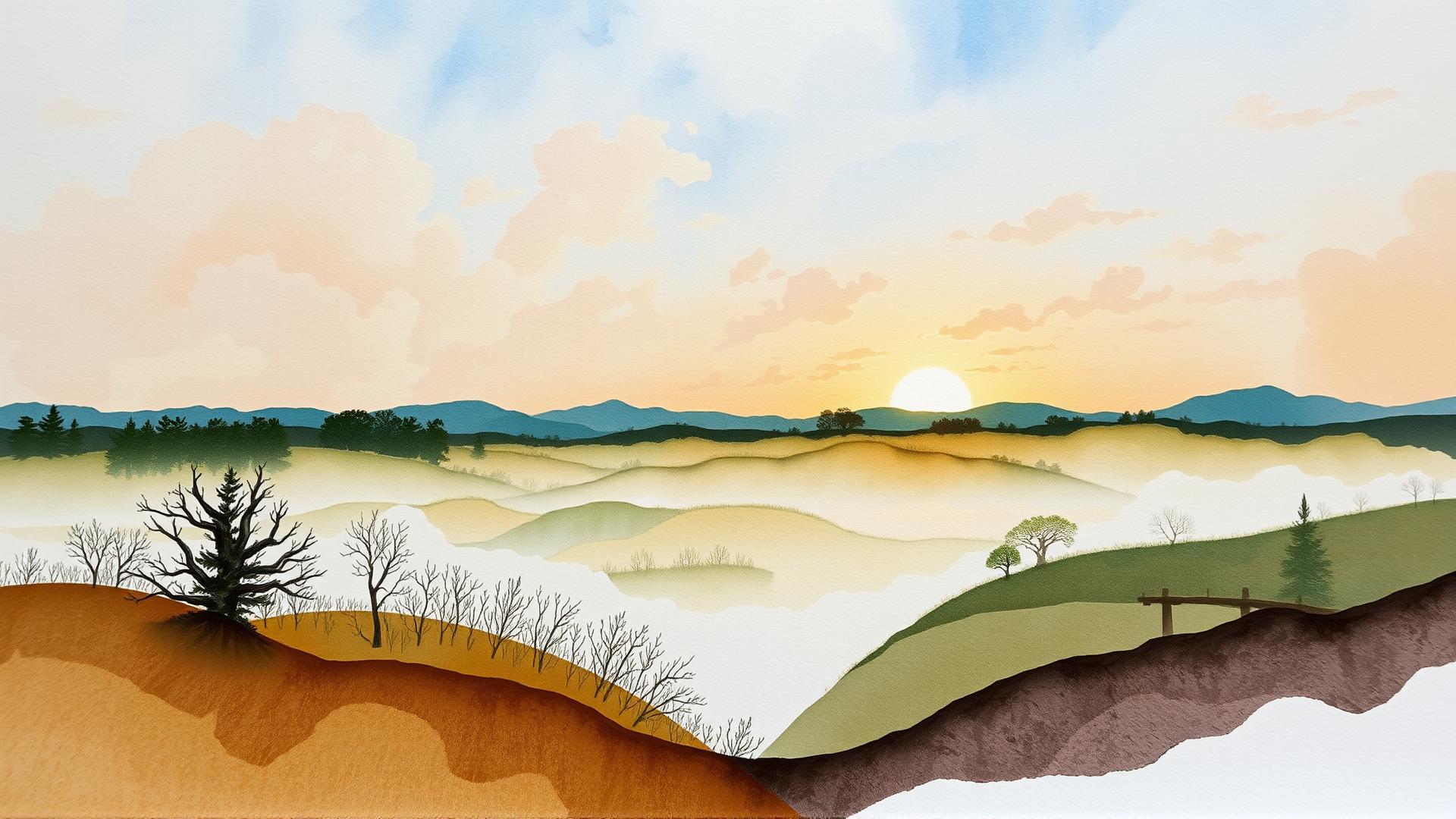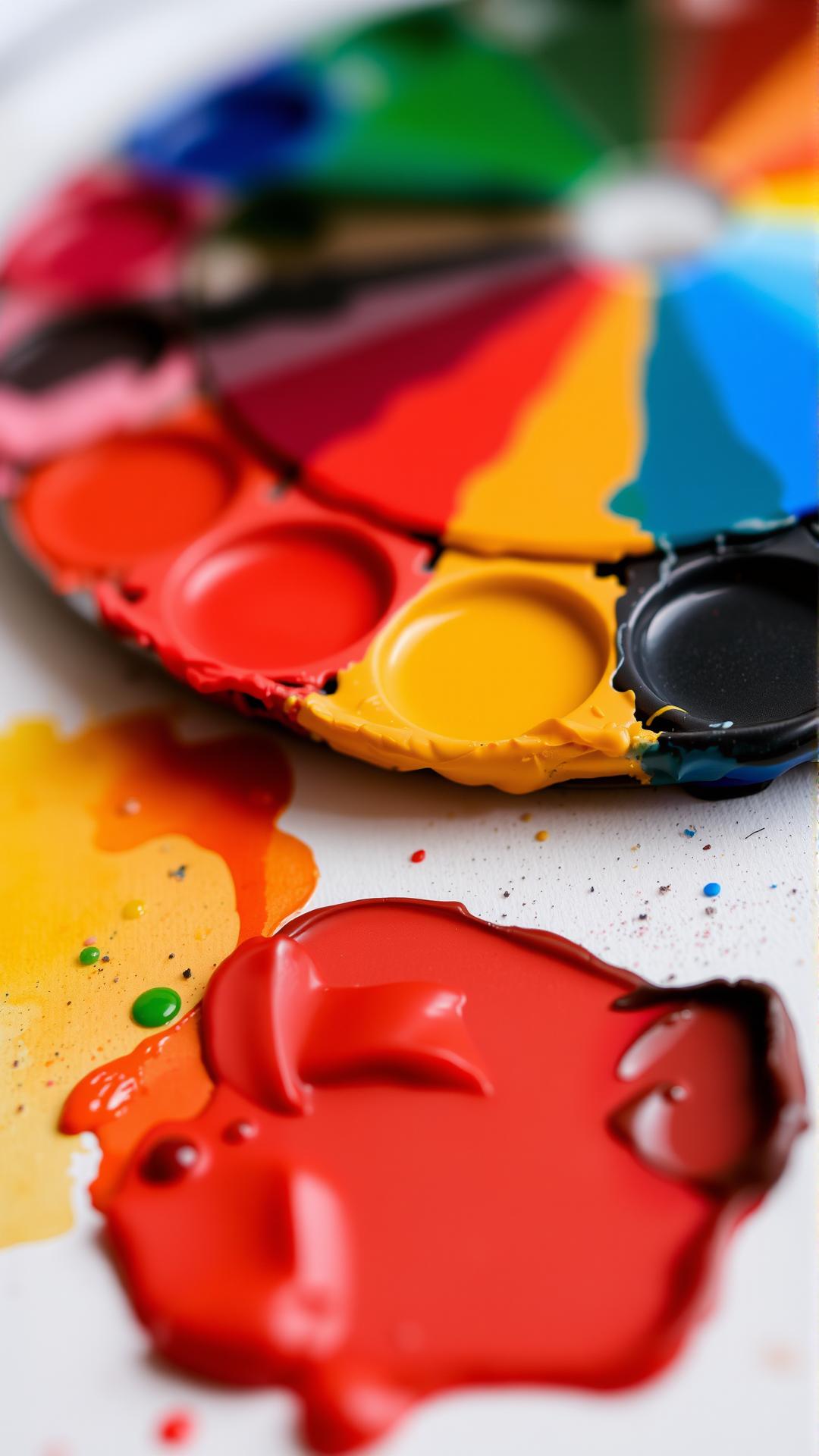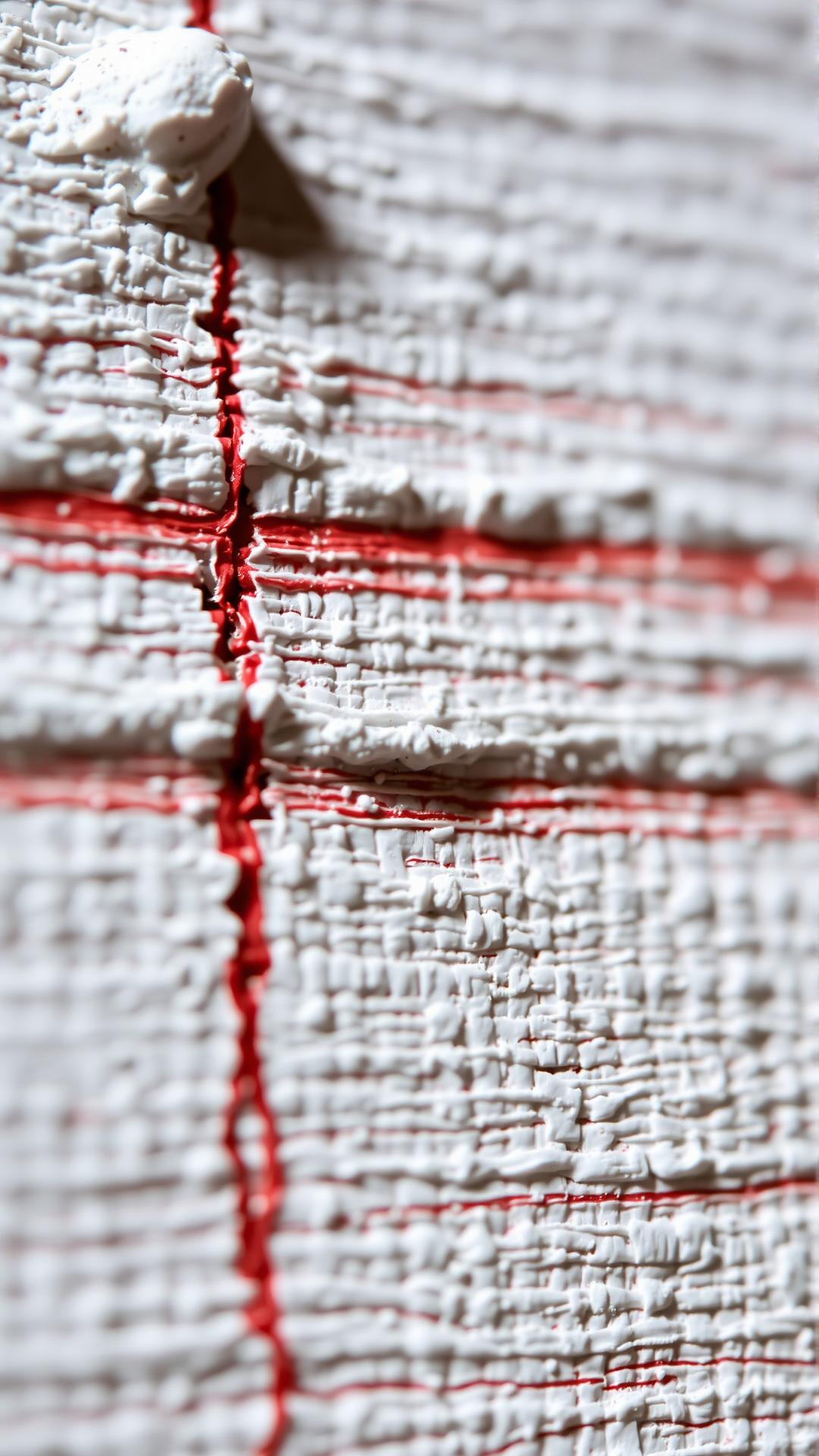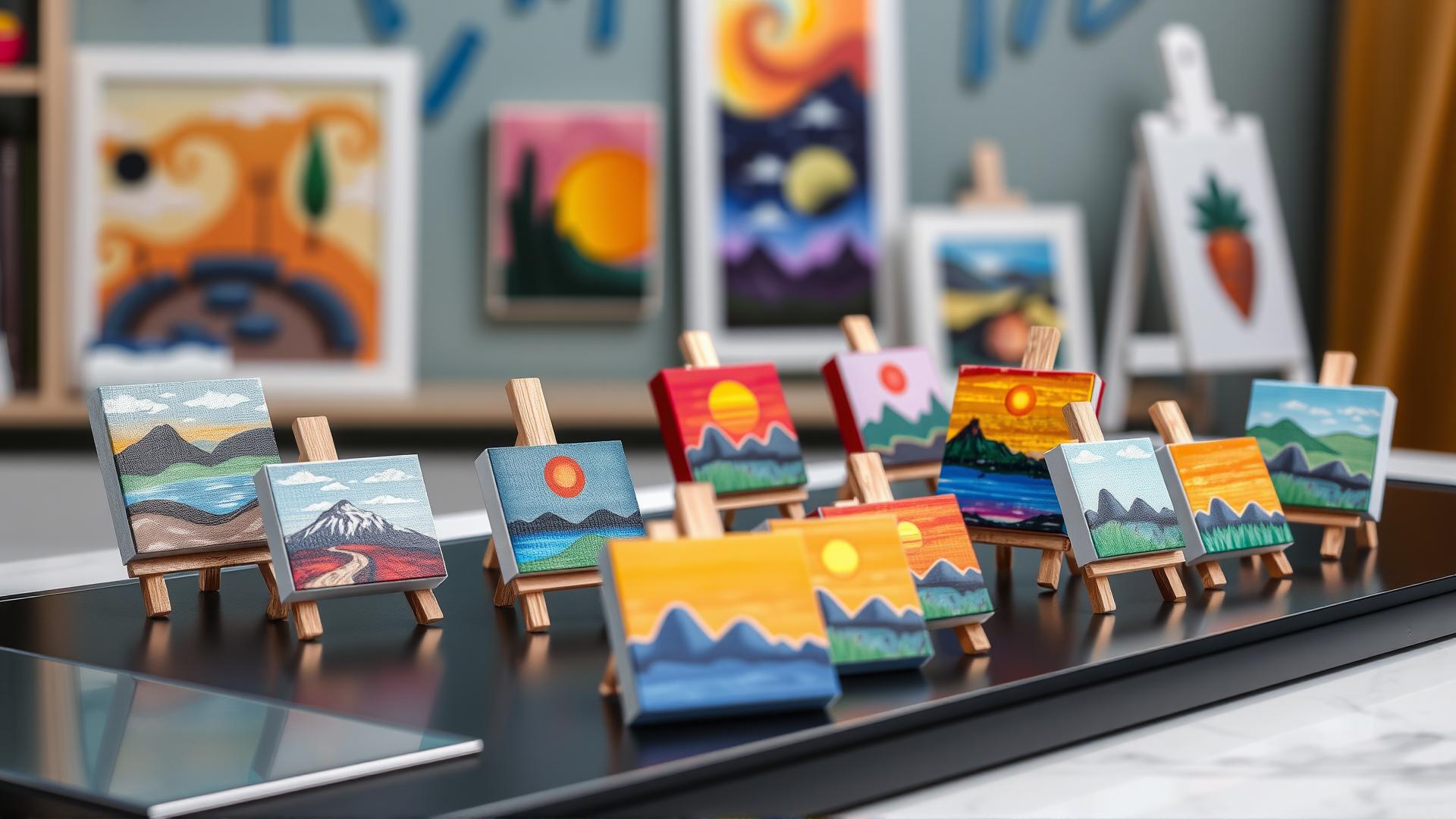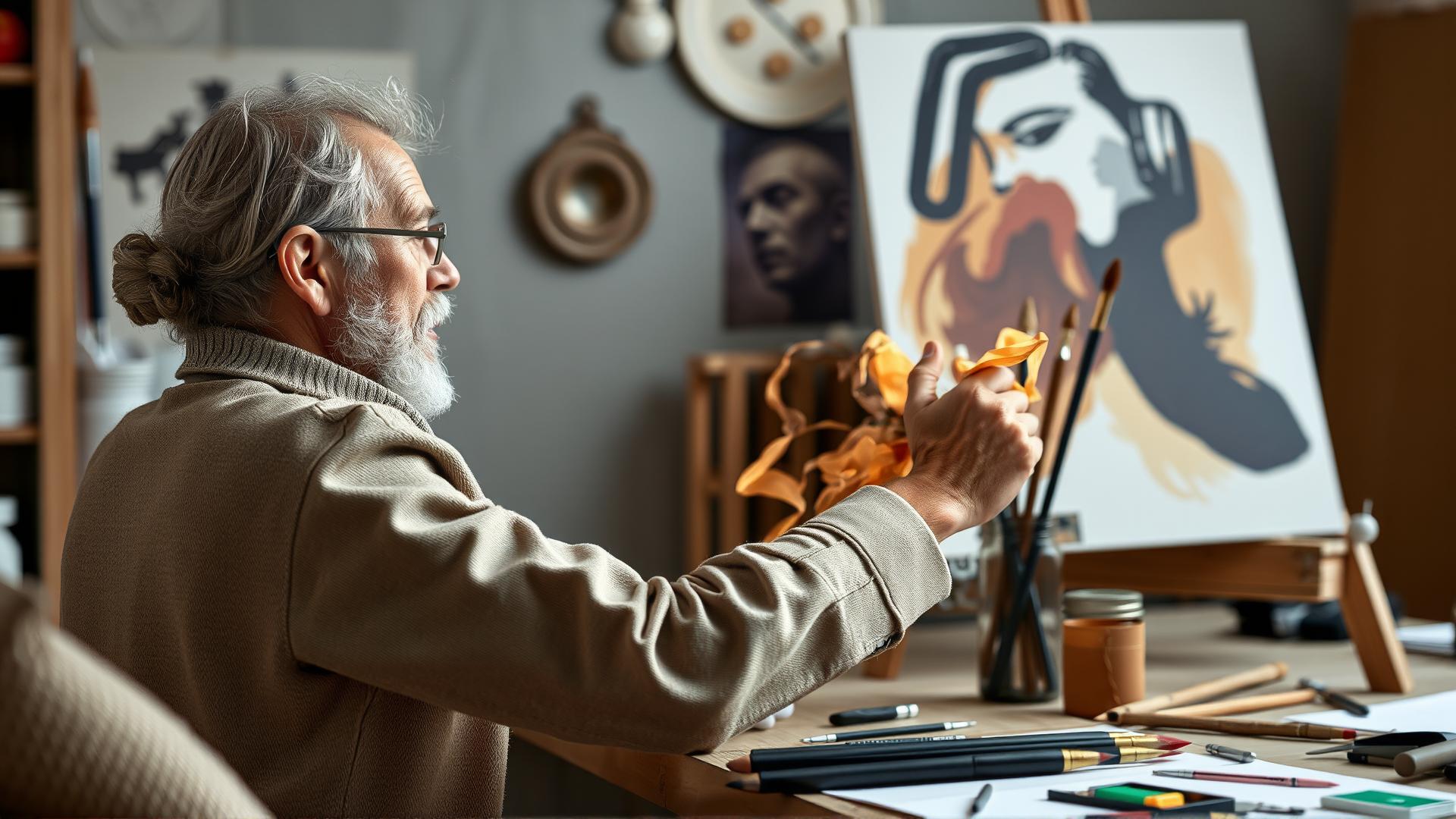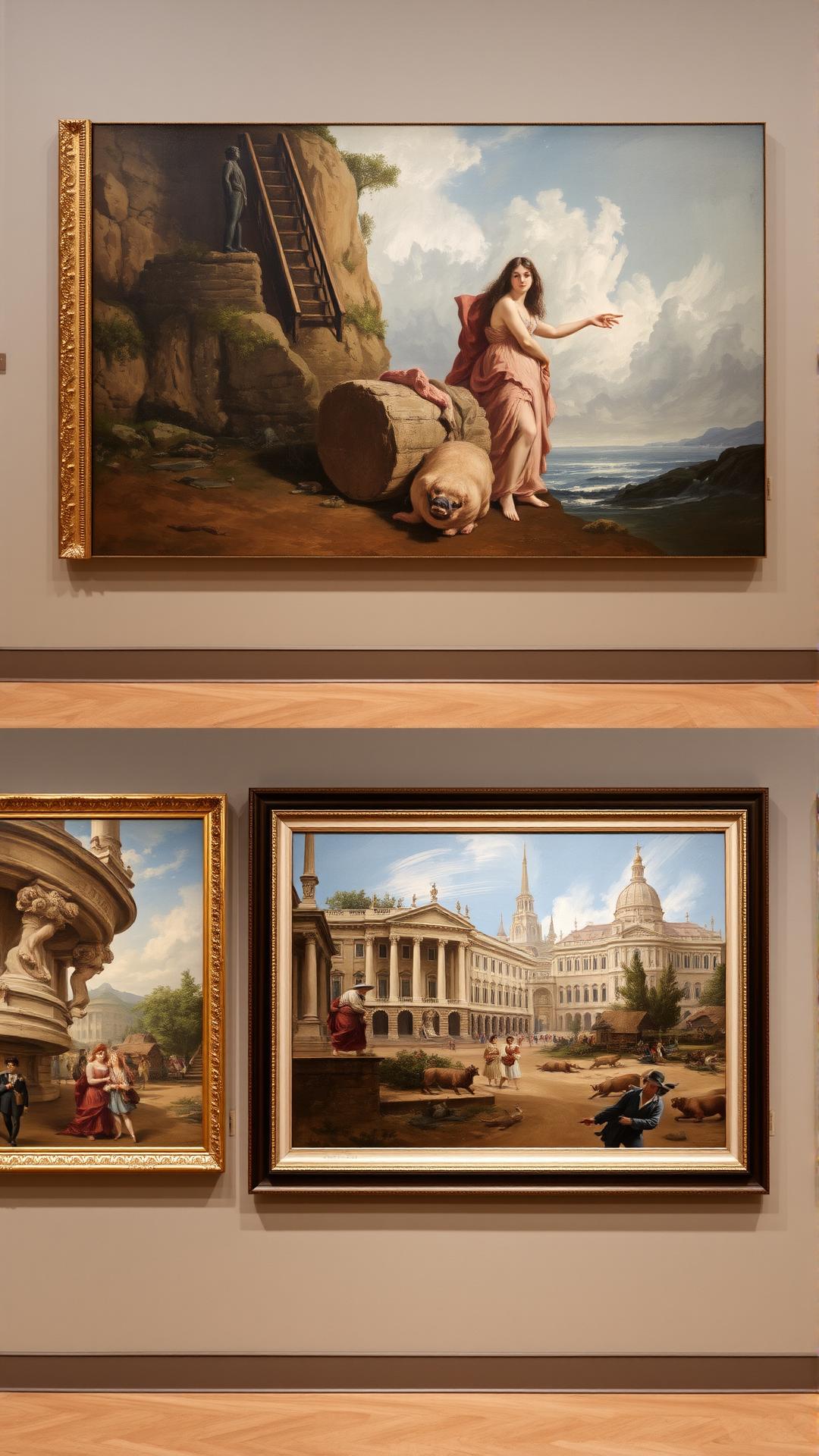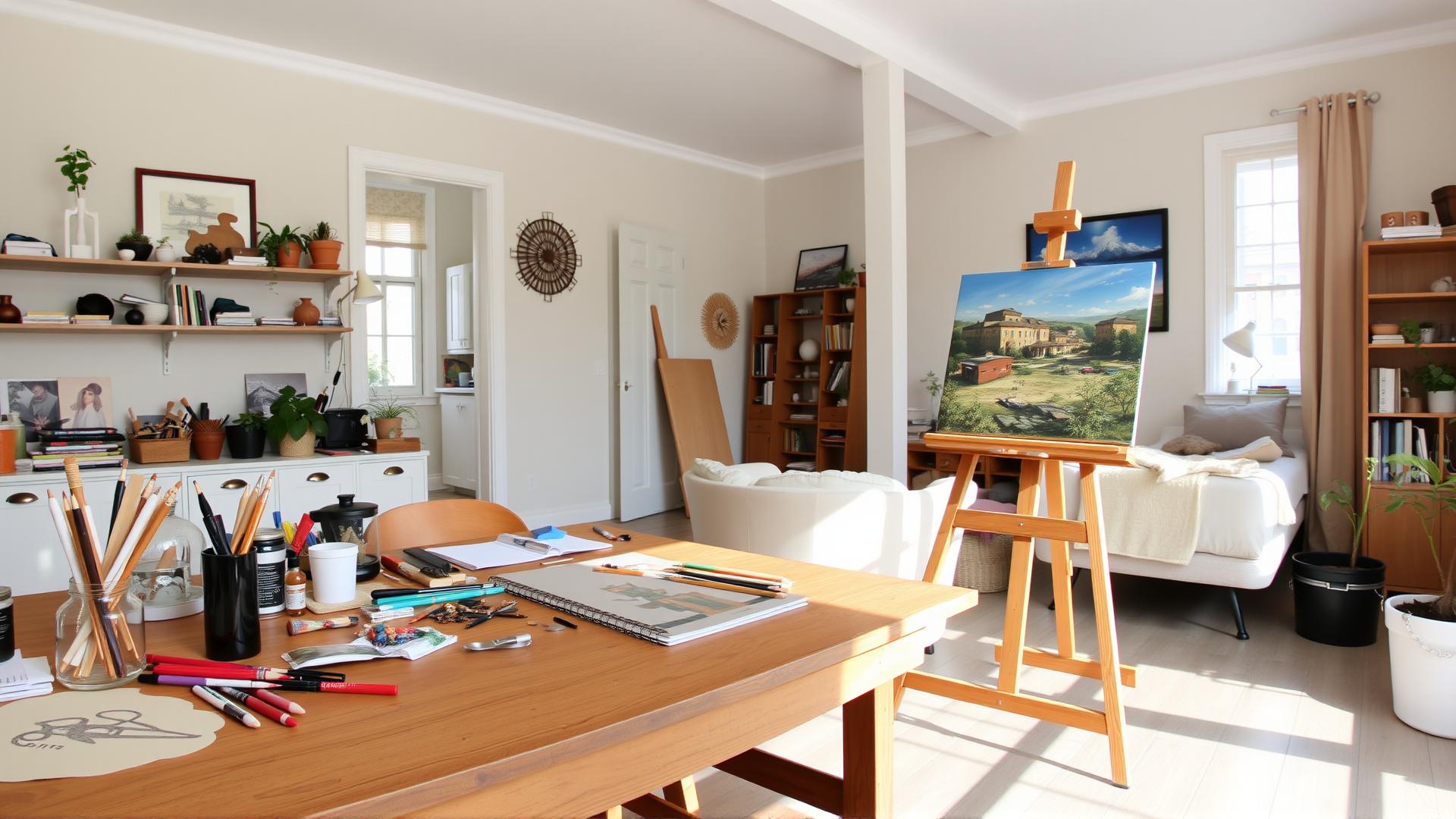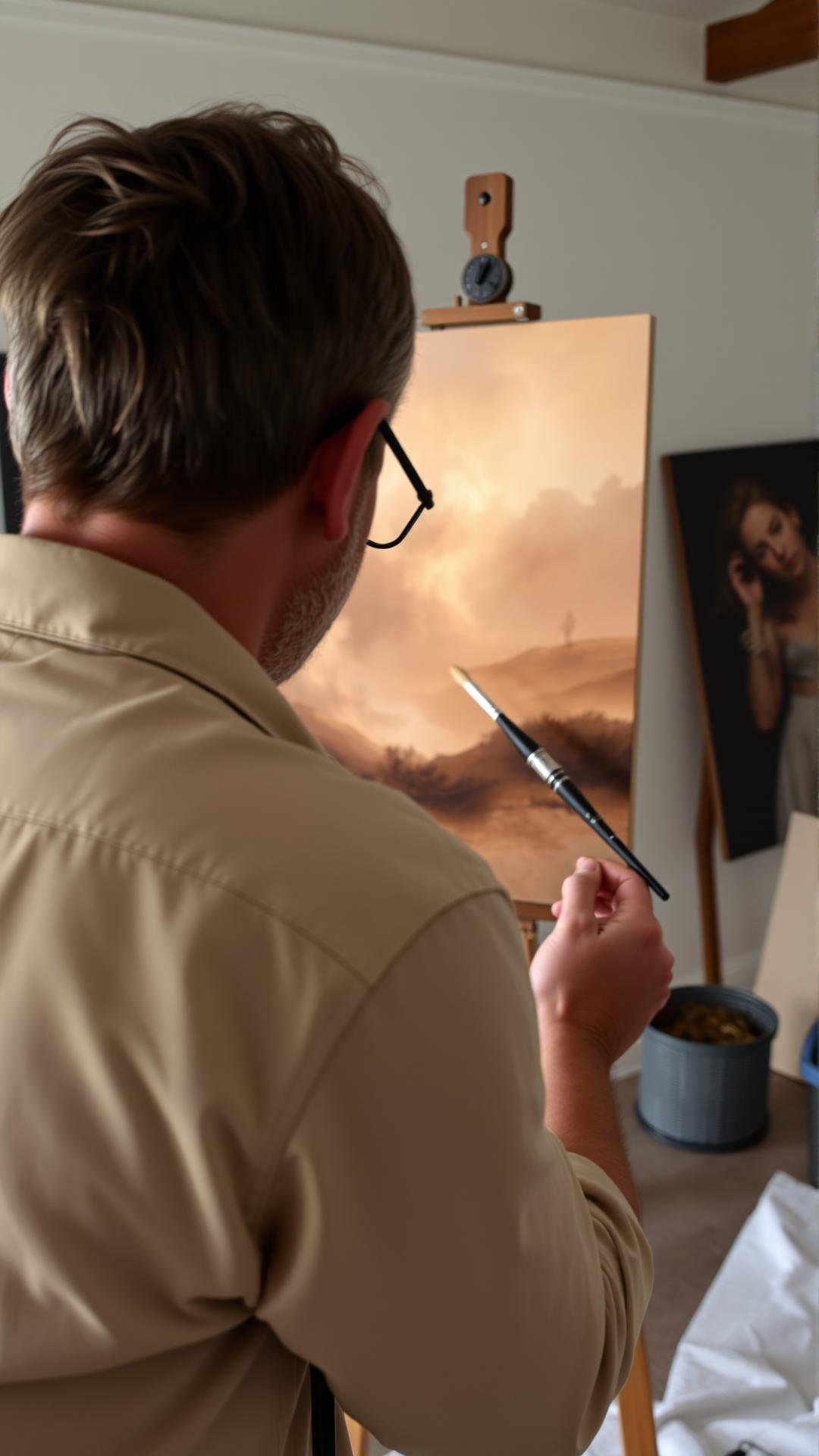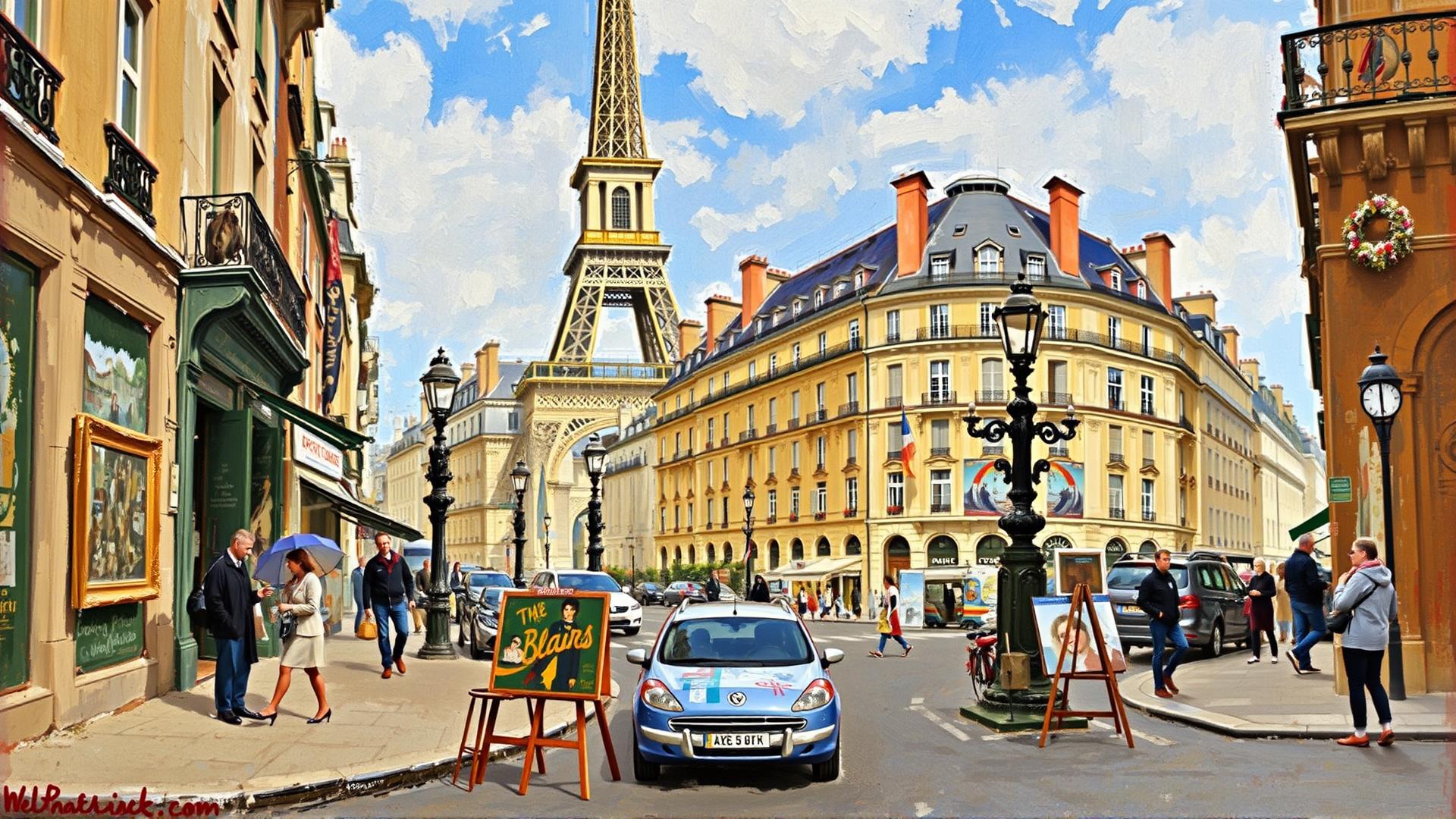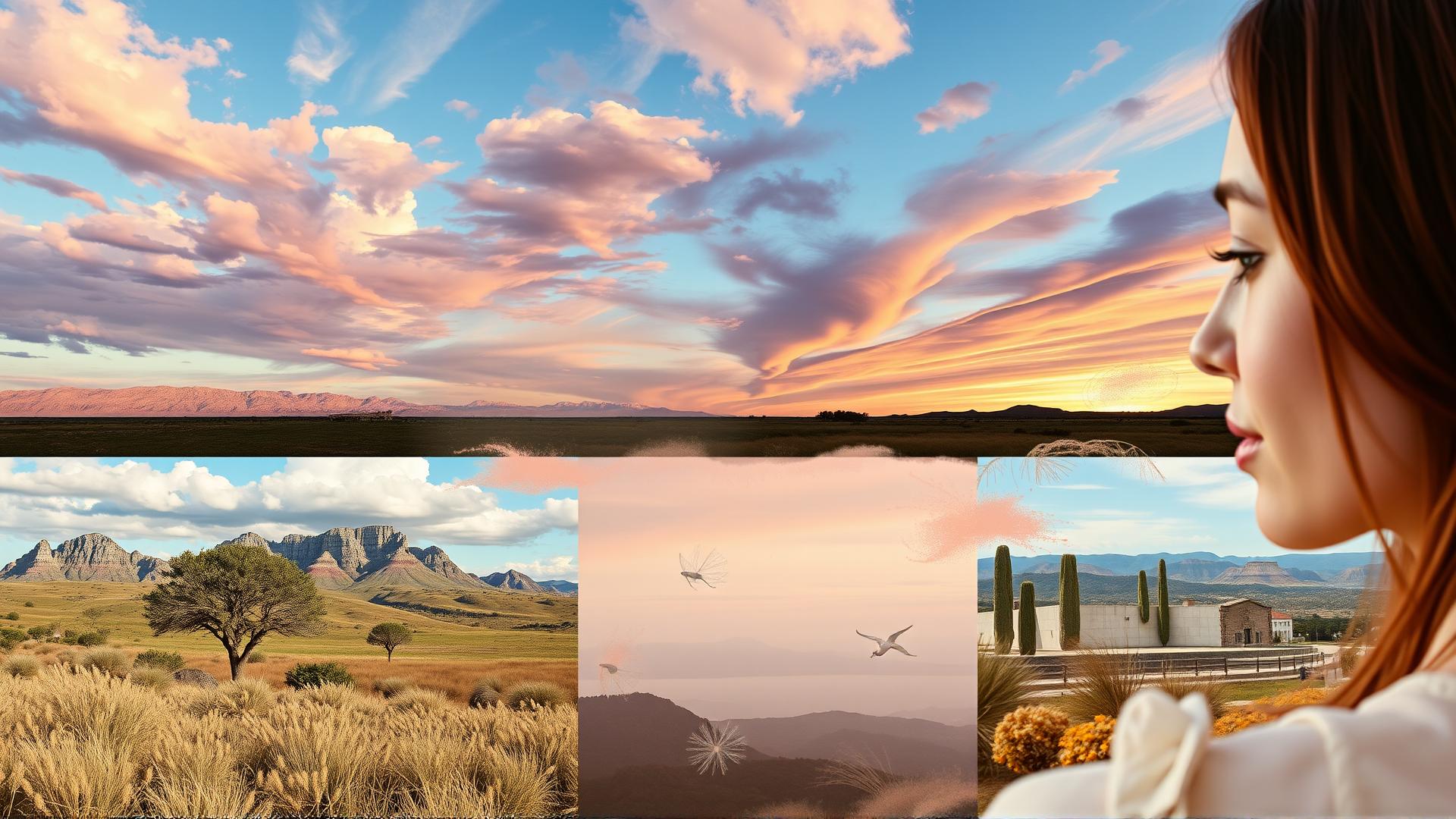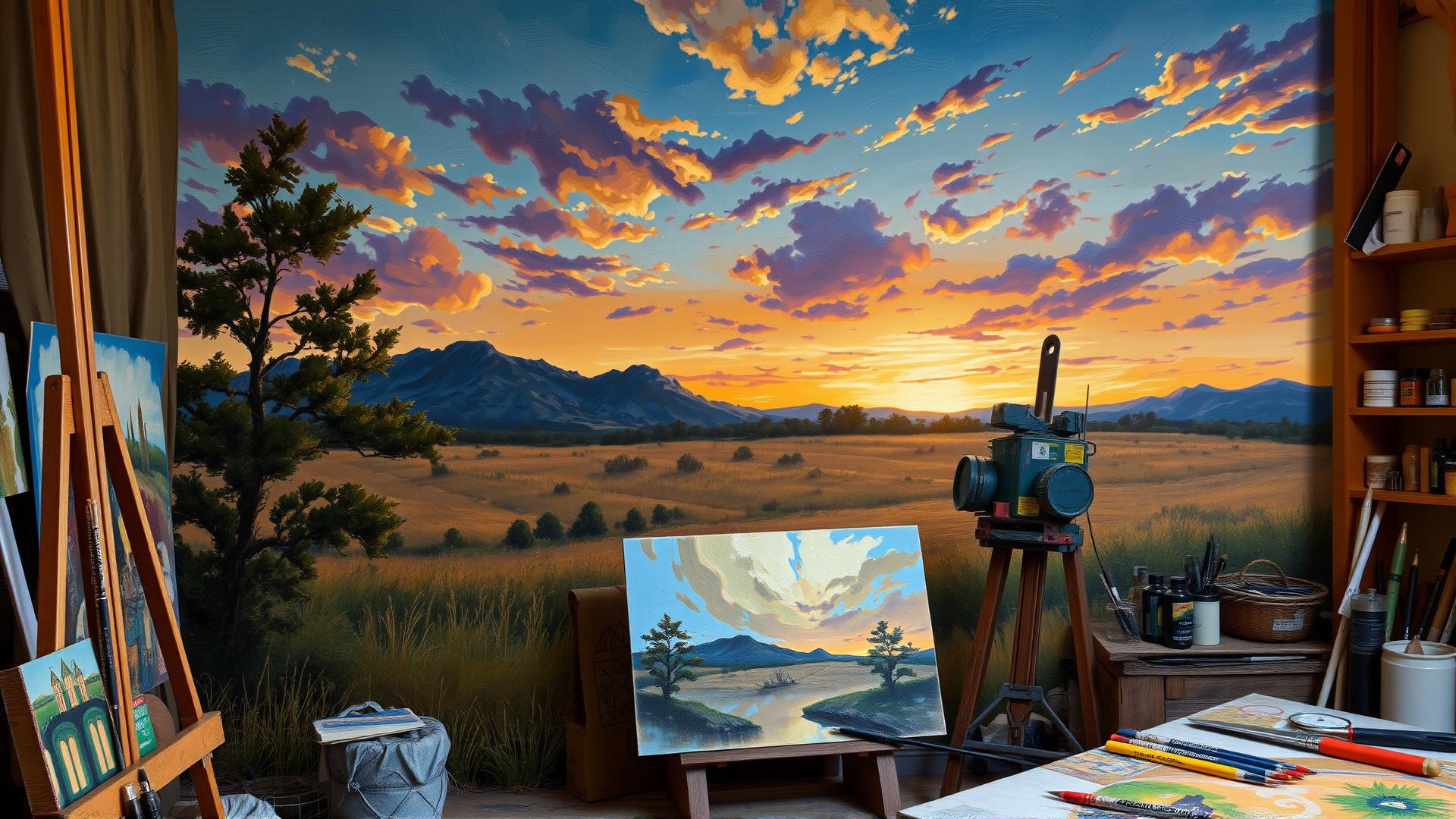
Creating Stunning Atmospheres With Oil Painting Backgrounds
Introduction
Oil painting backgrounds are a crucial element in creating captivating and immersive artworks. Whether you are working on portraits, landscapes, or abstract pieces, the background sets the tone and enhances the overall aesthetics of the painting. With the flexibility and rich color palette that oil paints offer, artists can experiment with texture and layering to achieve stunning effects. This article explores the intricacies of creating oil painting backgrounds that not only complement the main subject but also enrich the viewer’s experience.
The techniques used for oil painting backgrounds have evolved over centuries, enabling artists to utilize various methods for greater depth and complexity. By understanding the intricacies of oil paint mixing, application methods, and drying times, artists can develop backgrounds that contribute emotional resonance and narrative elements to their work. Join us as we delve deeper into the world of oil painting backgrounds, exploring techniques, creativity, and the artistic choices that can elevate your paintings.
Understanding Oil Paints and Their Characteristics
Unique Properties of Oil Paints
Oil paints have captivated artists for centuries, thanks to their unique characteristics that allow for diverse creative expression. One of the most notable properties of oil paint is its slow drying time, which varies depending on the type of oil and pigment used. This extended drying period enables artists to work with the paint over a longer session, facilitating techniques like blending and glazing that create stunning backgrounds.
The fundamental medium of oil paint is typically linseed oil, but artists often choose from a variety of oils, including poppy seed, walnut, and safflower oils. Each oil imparts different qualities to the paint; for instance, walnut oil dries faster and creates a richer gloss, while poppy seed oil remains lighter in color but can take longer to dry. Understanding these characteristics allows artists to tailor their approaches to background creation, ensuring they achieve the desired vibrancy and texture.
Understanding Pigments and Drying Times
The pigments in oil paints also play a pivotal role in how backgrounds can be developed. Each pigment has its unique opacity, tinting strength, and drying rate, which significantly affects the layering techniques artists use. For example, some pigments like cadmium red are more opaque and allow for bold applications, while others, such as titanium white, can brighten and lighten hues beneath them.
Drying times vary between mediums; for instance, linseed oil can take anywhere from six to 12 hours to become touch-dry, whereas more fluid mediums may dry faster. Artists often employ this knowledge strategically, layering paints to build depth or create atmosphere. Understanding how layers interact and dry can lead to the development of complex backgrounds that evoke rich landscapes or abstractions.
Artists can manipulate drying times by using various mediums to alter consistency. By mixing in dry mediums or altering oil ratios, tasks such as scumbling or glazing become easier to achieve. This versatility in handling oil paints makes them a powerful tool for portraying tone, light, and texture in backgrounds, all crucial elements that set the ambiance of any artwork.
Techniques for Applying Oil Paint Backgrounds
Layering, Blending, and Glazing Methods
Creating stunning oil painting backgrounds is an art in itself, and various techniques can enhance the atmosphere of any artwork. Layering, blending, and glazing are three fundamental methods that artists use to achieve an immersive and captivating backdrop.
Layering is a technique that involves applying multiple coats of paint to build depth and richness in color. Each layer can alter the mood and atmosphere of the work. Artists usually begin with an underpainting, often in a monochromatic hue, which sets the tone for the subsequent layers. By utilizing transparent or semi-transparent washes on top, artists allow earlier colors to influence the final appearance, a practice that can create a luminous quality often sought after in oil paintings.
Blending is another essential method, allowing for smooth transitions between colors and subtle gradations. This technique is critical when creating skies, landscapes, or atmospheric conditions, where harsh lines would disrupt the tranquil feel. Artists use various tools for blending, including soft brushes and palette knives. The key is to work while the paint is still wet; this ensures colors meld seamlessly. An effective way to master blending is to practice on separate canvases, experimenting with different strokes and approaches until a comfortable technique is developed.
Glazing adds another layer of sophistication to oil painting backgrounds. This technique involves applying thin, transparent layers of color over dried paint, enhancing depth, vibrancy, and richness. Glazing can transform simple backgrounds into complex, luminous scenes. Artists often use a medium to help with the glazing process, allowing paint to flow easily while drying transparently. The choice of glaze color should be made thoughtfully; colors can deepen shadows, enrich tones, or even alter the perceived temperature of the colors underneath.
Incorporating these techniques enables artists to create a wide range of moods and emotions within their works. By layering, blending, and glazing, backgrounds become dynamic spaces that invite viewers into the artwork, making the focal point stand out while harmoniously integrating with the surroundings. Mastery of these methods allows artists to elevate their skills and transform their paintings into captivating masterpieces.
Color Theory in Oil Painting Backgrounds Enhancing Your Artworks Focal Point
The Role of Color Theory in Oil Painting Backgrounds
Understanding color theory is fundamental for any artist aiming to create cohesive and compelling artworks. In the context of oil painting backgrounds, using color theory effectively can significantly enhance the focal point of a piece, drawing the viewer’s eye where intended. At its core, color theory delves into the relationships and interactions between colors and how these can affect the emotional resonance of a painting. Through a carefully selected color palette, an artist can establish depth, mood, and emphasis.
When selecting background colors, artists should consider the color wheel, which categorizes colors into primary, secondary, and tertiary groups. By leveraging complementary colors—those located opposite each other on the color wheel—an artist can create striking contrasts that elevate the subject matter. For instance, placing a warm-toned focal point against a cool background can enhance visibility and drama, ensuring that the focal point commands attention.
Analogous colors, found next to each other on the color wheel, can also be effectively utilized in oil painting backgrounds. Employing a gradient of analogous hues can instill a sense of harmony and unity within the composition. This subtle blending serves to envelop the focal point in a gentle atmosphere, which may be particularly beneficial when the subject conveys a softer narrative. For example, using shades of orange and yellow in the backdrop for a red flower can enhance the bloom’s vibrancy without overwhelming it.
Artists should also be mindful of color temperature—warm and cool colors play pivotal roles in setting the overall mood. A warm background can evoke feelings of warmth and intimacy, while cooler tones inspire calmness and serenity. By strategically selecting these elements, an artist can evoke specific emotions, supporting the story they aim to tell through their artwork.
Color Relationships and Practical Applications
Color harmony can be achieved through various combinations, including triadic schemes, which use three colors that are evenly spaced on the color wheel. This method can yield exciting results, as it creates a vibrant and dynamic backdrop that can support a central subject without overshadowing it. It is essential for artists to experiment with different combinations to understand their impact on the overall aesthetic of the painting.
The effective application of color theory in oil painting backgrounds not only enhances the focal point but also creates an immersive experience for the viewer. As artists explore these rules and techniques, the ability to evoke emotion and connection through color becomes a powerful tool in their artistic arsenal. With practice and exploration, the seamless integration of color into backgrounds can truly transform an artwork into a stunning masterpiece.
Creating Textures with Oil Paints The Impact of Texture on Oil Painting Backgrounds
Understanding Textural Techniques
Texture in oil painting backgrounds is not merely an embellishment; it serves as a core element that contributes to the overall atmosphere of an artwork. Different textural techniques can transform a smooth canvas into a vibrant landscape and evoke emotions that enhance the narrative of the piece. Artists can manipulate the medium to achieve various effects, from thick impasto layers to subtle glazes that create depth and intrigue.
One predominant technique is the use of palette knives, which can apply paint in thick, expressive strokes. This method generates coarse textures that create a visceral connection to the artwork. For example, using a palette knife to create a rough, textured surface may symbolize turmoil or dynamic energy, while a smoother application can instill a sense of calm or spaciousness. The choice of technique directly influences the viewer’s perception and engagement with the painting.
Textures and Their Emotional Resonance
Exploring different textures in oil painting backgrounds facilitates a deeper emotional resonance with the audience. A background painted with heavy, textured strokes can evoke feelings of chaos or intensity, while soft, blended backgrounds can promote tranquility and serenity. Moreover, layering techniques allow artists to build complexity and intricate detail in their backgrounds, enhancing the storytelling aspect of their work.
Another effective method is creating texture through the incorporation of mixed media. Artists might integrate materials like sand or fabric into their oil paints to establish unique tactile qualities. Such materials can add dimension and create visual interest, making the background more than just a passive element of the painting.
The juxtaposition of different textures within the composition can also guide the viewer’s eye toward the focal point. By using a slick, polished texture for the focal subject against a more rugged background, the artist can create a delightful contrast that forces the viewer to center their attention on the main elements of the painting. This distinction is vital for maintaining balance and harmony within the artwork.
In the journey of creating stunning atmospheres with oil painting backgrounds, texture plays an indispensable role, demanding careful consideration by the artist. Utilizing the range of techniques available opens up endless possibilities for achieving remarkable compositions that resonate deeply with the viewer.
Experimenting with NonTraditional Backgrounds Challenge Conventional Oil Painting Approaches
Innovative Techniques for Creating Distinctive Atmospheres
In the vast world of oil painting, the background serves as an integral element that can either enhance or detract from the subject. While many artists traditionally rely on conventional backgrounds, exploring non-traditional approaches can yield stunning and captivating results. This chapter delves into innovative methods to create unconventional oil painting backgrounds that transform the mood and tone of your artwork.
One way to achieve unique backgrounds is through the use of unusual materials. Consider integrating textured mediums such as sand, fabric, or even paper into your oil paints. These materials can introduce a new tactile quality to your paintings, fostering an interactive atmosphere. For instance, embedding bits of textured fabric can provide depth, giving the viewer an experience that feels almost three-dimensional. Not only does this technique invite curiosity, but it also allows for a richer visual narrative that evokes emotion and interest.
Color choice plays a significant role as well. Typically, artists opt for a soft gradient or monochromatic palette for backgrounds. Instead, experimenting with bold colors or unexpected combinations can create a striking contrast that highlights the primary subject. For instance, a vibrant orange background could evoke feelings of warmth and excitement, while a deep blue might impart calmness or even melancholy. Avail yourself of the color wheel, and don’t shy away from unconventional pairing to establish mood that resonates with your intended theme.
Another avenue worth exploring is the use of layering techniques with translucent glazes. By applying multiple thin layers of oil paint, artists can produce luminous backgrounds that change dynamically with light. This method not only adds depth but also allows for a play of light and shadow that enhances the visual interest. Such layers can also contain abstract shapes or patterns, further blurring the line between background and subject and leading the viewer’s eye throughout the painting.
Consider exploring different brushstroke techniques for backgrounds. Employing palette knives, sponges, or even unconventional tools such as rags can infuse your backgrounds with spontaneity and expression. This not only distinguishes your artwork but also establishes a unique style that sets you apart in a sea of traditional compositions. By stepping outside of the realm of conventional backgrounds, you invite fresh energy and vitality into your work, making it resonate with new audiences.
Incorporating Nature and Urban Elements
You can draw inspiration from diverse environments. Infusing organic elements like leaves, flowers, or even splashes of nature’s colors lends an earthy vibrancy to your artworks. Alternatively, urban motifs like brick patterns or graffiti styles can provide a modern edge, communicating a narrative that speaks to contemporary life. The key lies in pushing boundaries and accepting imperfections, resulting in an authentic and emotive background that complements your subject in unexpected ways.
Famous Oil Painting Backgrounds and Techniques Analyze the Contributions of Renowned Oil Paintings
The captivating backgrounds in famous oil paintings significantly contribute to the atmosphere and emotional resonance of the overall artwork. Renowned artists skillfully crafted their backgrounds, transforming them into more than mere contexts; they became integral to the narrative and feeling of each piece. One outstanding example is Vincent van Gogh’s “Starry Night.” The swirling night sky, with its bold brushstrokes and vibrant colors, portrays a sense of movement and emotion that draws the viewer into an expressive dreamscape. The background not only encapsulates the night but also mirrors van Gogh’s inner turmoil and fascination with the cosmos, enhancing the painting’s emotional depth.
Claude Monet’s “Impression, Sunrise” uses soft, muted colors to create a tranquil yet vibrant backdrop. The hazy water and the glowing sun reflect the play of light on the water’s surface, embodying the essence of impressionism. This background, painted with loose, fluid brushstrokes, immerses the viewer in the ethereal beauty of the moment, spotlighting the nuanced interplay between light and color that defines Monet’s approach.
Another iconic work is “The Birth of Venus” by Sandro Botticelli. The delicate details of the background, featuring soft waves and a gentle sky, establish a serene yet mythological atmosphere. The ethereal quality of the background supports the central figures, enhancing the allegorical message of beauty and love. Each element is meticulously conceived to serve the narrative, showcasing how backgrounds can enhance thematic content and emotional impact.
Backgrounds in oil paintings can also reflect social contexts and historical moments. In Diego Velázquez’s “Las Meninas,” the intricate layers of texture and detail in the background not only serve as a spatial setting but also invite the viewer into a dialogue regarding reality and illusion. The contemplation of the perspectives and surrounding figures adds complexity to the viewer’s experience, demonstrating that a background can challenge perceptions of art itself.
These examples illustrate that backgrounds are not merely secondary elements in painting; they are vital components that contribute significantly to the atmosphere and narrative of the artwork. By studying these renowned pieces, artists can learn to use backgrounds as tools for enriching their own work, transforming ordinary canvases into extraordinary visual experiences.
Final Touches and Finishing Techniques in Oil Painting Backgrounds
Completing the Oil Painting Background
Once the initial layers of your oil painting background are established, the final steps involve refining and enhancing your creation to achieve a polished finish. These last touches play a pivotal role in how the background interacts with the main subject, contributing to the overall atmosphere of your artwork.
The first step in the final touches is assessing the texture and integrity of your background. If you have applied multiple layers, consider lightly scraping or sanding rough areas to achieve a smoother finish, if needed. Alternatively, you may want to embrace texture by applying a thin glaze or impasto in strategic areas to add depth. Glazing allows for subtle color adjustments, creating luminous effects that can enhance the emotional tone of the piece.
Focus on color balancing. Use a palette knife or brush to add small amounts of complementary or analogous colors, helping to harmonize the background with your subject. Ensure that the colors do not overpower the focal point but instead support it. Small additions of white or gray can lighten shadowed areas, making the background recede while also creating a sense of atmospheric depth.
Preparing for Display
Once the background is fully developed, preparing your artwork for display is essential. Begin by allowing the painting to dry thoroughly; oil paint can take weeks to fully cure, depending on the layers applied. If you’re eager to display your work soon after completion, opt for fast-drying mediums when finalizing the background.
After drying, consider varnishing your piece. A good varnish will protect the painting from dust and UV light while enhancing the colors’ vibrancy. Apply a thin layer of varnish using a soft brush, ensuring even coverage to avoid streaks or an overly glossy appearance. It’s advisable to test the varnish on a small area or scrap canvas first to confirm compatibility with your oil paints.
Framing can contribute significantly to the presentation of your artwork. Choose a frame that complements the colors and style of your oil painting background, enhancing its overall impact. When framing, ensure that your artwork is protected with a mat or glass, which can serve to further elevate the ambiance of your piece.
By taking the time to complete these final touches and preparations, you will present a stunning atmosphere through your oil painting backgrounds, inviting viewers into the world you’ve created with care and intention.
Conclusions
The art of creating oil painting backgrounds plays a pivotal role in enhancing the ambiance and storytelling of an artwork. Through careful selection of colors, application techniques, and layering methods, artists can establish a profound visual impact. The background serves not only as a support but as a vital element that adds depth and context to the main subject of the painting.
As you refine your oil painting skills, remember that experimenting with different backgrounds can lead to new discoveries in your artistic journey. Embrace the richness of oil paint and its versatility to create backgrounds that inspire and captivate. By focusing on the details and techniques discussed in this article, you can transform your oil paintings into true masterpieces that resonate with viewers.



